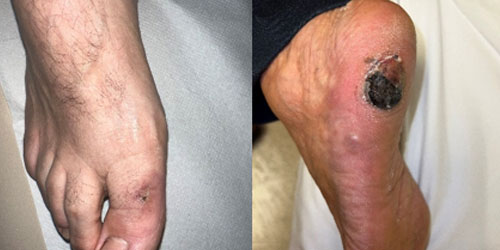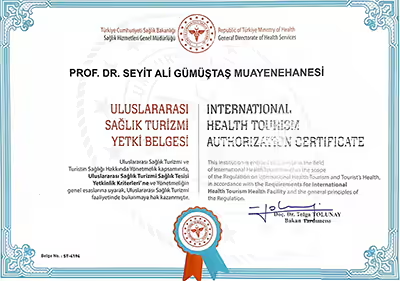KAPOSI'S SARCOMA
- Hits: 650
Kaposi's sarcoma is a rare malignant skin tumor of vascular (lymph or blood) origin. There are five different types: classical, endemic (African type), epidemic (associated with AIDS), iatrogenic (in transplant patients), and non-epidemic gay-related Kaposi's sarcoma.
Classical Kaposi's sarcoma is found in Mediterranean countries and affects mostly older men (usually over 60 years of age). It usually has a good prognosis and appears as a red/purple, slow-growing patch on the foot and hand. They are often located on the foot and tend to grow and spread upward over time.
Patients with long-standing disease may develop lymphedema and venous insufficiency in the affected extremity. Mucosal, lymph node, and visceral organ involvement may occur in 10-15% of patients.
Kaposi's sarcoma may be associated with other malignancies, particularly lymphoma, leukemia, and multiple myeloma.
Human herpes virus-8 has been identified as a risk factor. It is more common in the presence of immune deficiency (AIDS). The risk factor is also higher in grain workers, quinine users, and people living in rural areas.
The diagnosis is made by physical examination and pathological examination of the biopsy. It is important that the physician who performs the biopsy is an orthopedic oncologist who specializes in bone and soft tissue tumors, and that the pathologist who evaluates the biopsy sample is experienced in this field. Many different histologic subtypes (anaplastic, lymphangiectatic, bullous, telangiectatic, etc.) have been described.
Because it is a slowly progressing tumor, it is usually not taken very seriously by the patient and may be misdiagnosed and inappropriately treated by the physician. For this reason, the average time from the appearance of the tumor to its diagnosis is 13 months.
The main goal of treatment is to alleviate the patient's symptoms and stop the tumor's progression.
For this purpose, surgical excision, local treatments, radiotherapy and chemotherapy are used in case of widespread disease.

In stages 1 and 2, surgical excision, radiation, and vincristine may be administered to the tumor.
For single lesions, the primary treatment is clean surgical removal of the tumor. However, as with other malignant soft tissue tumors, removal with clean margins does not guarantee that the tumor will not recur or that its progression will be halted. There is no consensus on how wide the margins should be. Postoperative radiotherapy may reduce the risk of tumor recurrence.
Cryotherapy (tumor freezing) may be used for limited lesions less than 2 cm in diameter.
If the number of lesions is high and the existing lesion is large and invasive, the patient will be referred to radiation oncology for radiotherapy.
Chemotherapy is added to the treatment in the rapidly progressing type of grade 2 and in grades 3 and 4. Systemic chemotherapy is given for diffuse disease, rapidly progressing disease, and internal organ involvement. Commonly used drugs include doxorubicin, vinblastine, bleomycin, paclitaxel, and oral etoposide.


